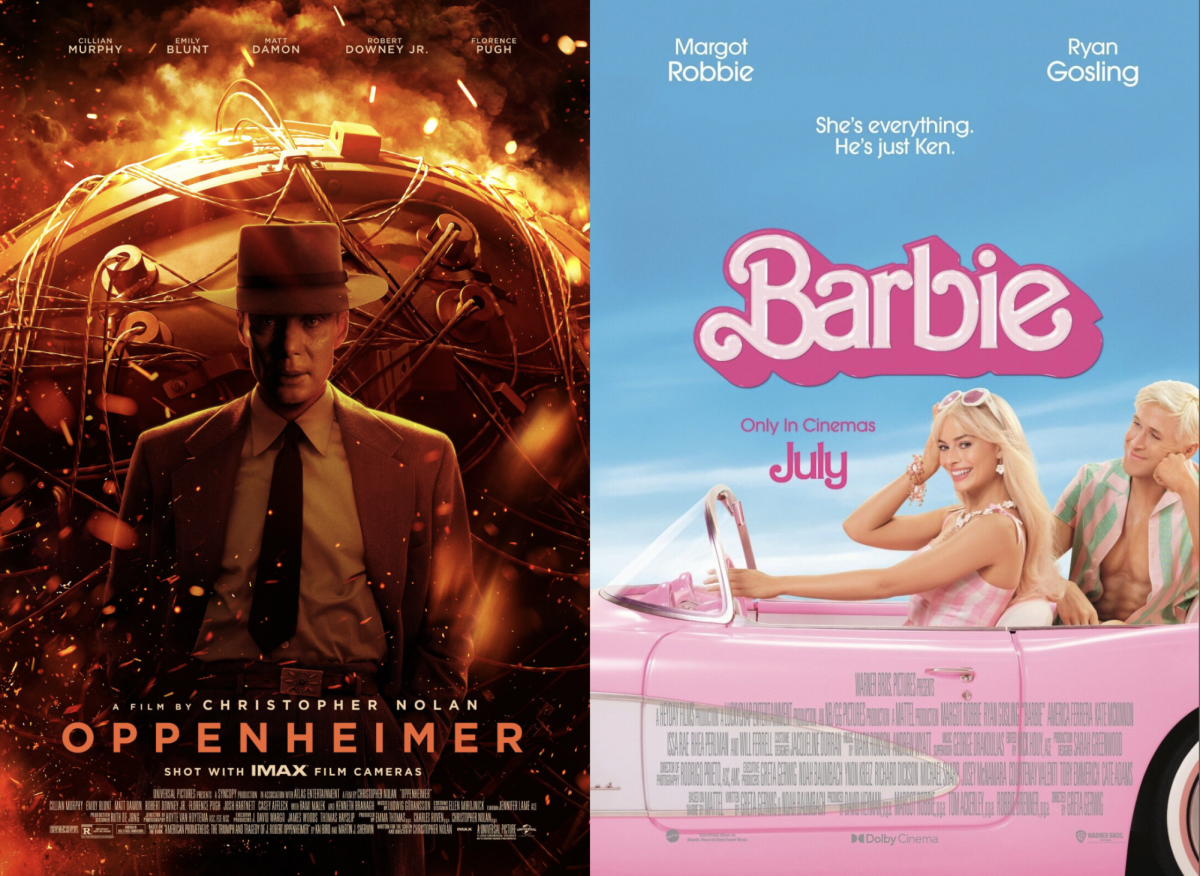There were many big events that impacted pop culture over the summer, but arguably none made as much of a splash as the cultural phenomenon commonly referred to as “Barbenheimer”. The portmanteau is the combination of two highly anticipated films––Greta Gerwig’s “Barbie” and Christopher Nolan’s “Oppenheimer”––that were both set to be released on July 21, 2023. The adjoining of these two films led to viral meme potential, in most part due to the extreme contrast in aesthetics the movies had, as well as major box office success. “Barbie” has grossed $1.347 billion dollars globally and domestically and is currently Warner Bros.’ highest grossing film, ranking 17th on the all time worldwide chart. Oppenheimer, while not quite as successful, still amassed a whopping $788.2 million overall.
Gerwig’s “Barbie” is a live action adaptation of the beloved doll Barbie produced by toy manufacturer Mattel. The very nature of the film lends itself to a mass amount of the color pink and other traditionally feminine branding being included in its marketing. Juxtaposing this with the dark, gritty biopic “Oppenheimer” which follows the career of the titular J. Robert Oppenheimer––the father of the atomic bomb––inevitably led to the two films dominating cultural discourse for months leading up to the release date.
As with most things these days, one of the main places Barbenheimer went viral was on TikTok, amassing over 1.1 billion views as of writing under the Barbenheimer hashtag. These videos span everything from debating the Barbenheimer watch order (general consensus is “Oppenheimer” first followed by “Barbie”) to using editing software to humorously splice scenes from the two movies together. One of the largest trends to come from this phenomenon is the surge in Barbenheimer themed outfits. Individuals would dress in pink or black––or a combination of the two––to signify which movie they were there to see. It can be argued that this trend transformed Barbenheimer from just two movies that were being released into a full on event. It led to almost a feeling of community among moviegoers who were participating and allowed for individuals to feel involved with the films rather than being just a passive watcher.
So was it just pure coincidence that this phenomenon occurred? Seemingly not. Back in December 2020, the parent company of Warner Bros. made the decision to send all upcoming 2021 releases straight to their streaming platform HBOMax citing the impact of COVID on the film industry. “Oppenheimer” director Christopher Nolan (who has released all of his films with Warner Bros. since 2002) publicly spoke out against the decision and went to Universal Studios to distribute the upcoming film. The announcement of Oppenheimer’s release date caused Warner Bros. to switch out their original release scheduled for that date––a movie titled “Coyote vs. Acme”)––for Greta Gerwig’s “Barbie”. With this move, Warner Bros. was implementing a marketing strategy known as counterprogramming.
Counterprogramming is a strategy used in the film industry where, to take advantage of the buzz surrounding a highly anticipated new release or event, a different studio will release a movie that targets the audience not interested in the big release as a way of capitalizing on the unfulfilled niche. Some of the main examples of this include the release of “Warm Bodies”, a zombie romance film, to target a female teen demographic during the 2013 Super Bowl and the release of another Christopher Nolan film “The Dark Knight” and the coinciding release of Phyllida Lloyd’s “Mamma Mia!”. While typically this strategy is intended to create competition, it actually did the opposite for Barbenheimer, boosting anticipation and box office sales for both movies. Given the success of both films and the phenomenon overall, it remains to be seen if movie producers will try to replicate the unanticipated magic of Barbenheimer in the future.






